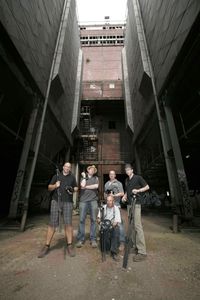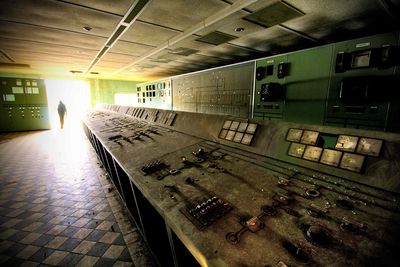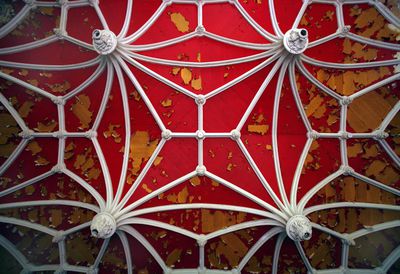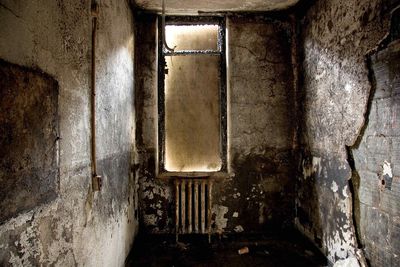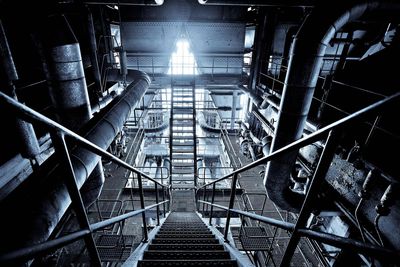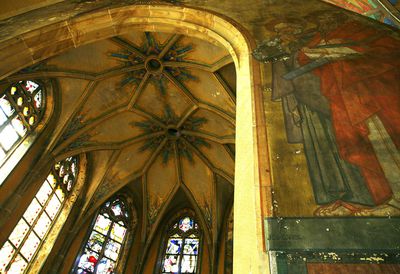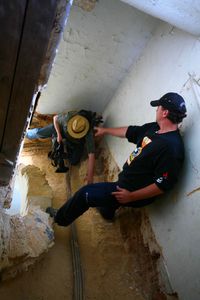PhotoXplorers
Premieres: Southeast Asia on Dec 7 at 8:00 pm; Australasia on Oct 14 at 9:30 pm
TAKE A GLIMPSE AT THE PAST AS SEEN THROUGH THE LENS OF THE PHOTOXPLORERS
Abandoned buildings and relics are the focus of a band of guerilla photographers known as the DK Photo Group (DKPG) in TLC's new series PHOTOXPLORERS. Follow these audacious urban adventurers as they explore forgotten buildings that once stood as bastions of social institutions, capturing breathtaking art amidst the neglect and decay and preserving history with their cameras.
PHOTOXPLORERS features five avid photographers collectively known as the DK Photo Group (DKPG). Meet urban planner Sean Galbraith, real estate agent Laurin Jeffrey, photographer Steve Jacobs, telecommunications sales director Matthew Merrett, and photographer/instructor Russell Brohier. The PHOTOXPLORERS share a passion of bringing the past to light and preserving history through their photographs. Each with a keen eye and unique artistic talent, they visualise and interpret beauty within decay, giving voice to the silent testaments of our social heritage.
From abandoned sanatoriums to forgotten castles, the PHOTOXPLORERS roam the decaying relics and artistically weave stories and reconstruct the human connections surrounding these neglected locations. Marvel at the allure of decay as the PHOTOXPLORERS take you under barbed wire fences and behind plywood walls to capture haunting images of abandoned buildings and structures from around the world.
PHOTOXPLORERS episode descriptions:
Coal Mine, Belgium
The coal mine in Hasard de Charette, Belgium dates back to the 1860's, and was one of the numerous mines in the Liège coal basin. Designated as a Belgian protected landmark, the mine has been closed since 1977 and has remained undisturbed for the most part. The PHOTOXPLORERS face numerous challenges to get their shot - among them is shaft No. 3, which runs to a depth of 480 metres.
Sanatorium, France
Sanitorium Fernand Bezancon (Le Château de Franconville) is set in a breathtakingly beautiful location just 30 minutes north of Paris. The 19th century saw the construction of many castles all around France, often under the wish of fortunate families. After the demolition of the first castle built here in 1775, the Duc de Massa ordered the construction of a new castle in 1884 - with a theatre and an orangery. The vocation of the site changed in 1924 to become a tuberculosis hospital until 1992.
Factory, Luxembourg
PHOTOXPLORERS travels to Luxemburg for the Central Thermique which was used to produce electricity from the highly toxic gas of the neighbouring furnaces. The electricity was intended for domestic and industrial use. Built in 1951, the Central Thermique has been closed since 1997, just after the last furnace was shut down.
Castle, Belgium
During the French Revolution, the family of the Count of Liedekerke-Beaufort left the feudal Château de Vêves and lived at a nearby farm. After the Revolution, this opulent residence was built as a summer home for the family in 1866 by an English architect Milner, although he died before seeing its completion. In 1958, it was used by the SNCB (a Belgian national rail company) as a home for the railwaymen's children and became Château de Noisy. It was abandoned in 1991 and has been falling into ruins since.
Industrial factory, Germany
PHOTOXPLORERS visits the abandoned Sinteranlage, located in Duisburg. Sintering is a method for making objects from powder, by heating the material until its particles adhere to each other. Sintering plants are a result of process optimisation, which made blast furnaces in the course of the years more productive and environmental. While some of the machines have been taken away from the plant, many still remain inside. Rusty stairs take us many floors up to great views over the plant.
School and Church, Germany
In 1913, the Franciscans established a home where they took care of the disabled. In the 1930s, they were overwhelmed by the Nazis who caused the economic bankruptcy of this community. The Nazis also built the so-called "Kinderfachabteilungen", which doubled up as killing institutions. In 1952, the Franciscans got back their former property, but sold it to the federal government, who rented the ground to the British Rhine Army until 1991.
Some of the media you are attempting to download are from Networks that limit downloads to 5 per day.
